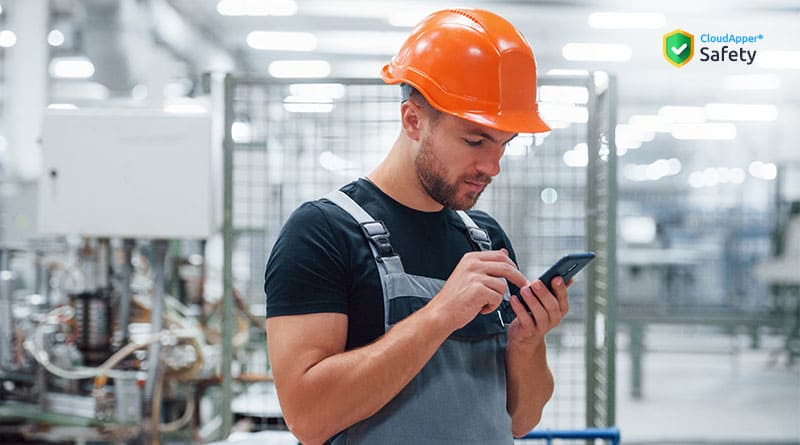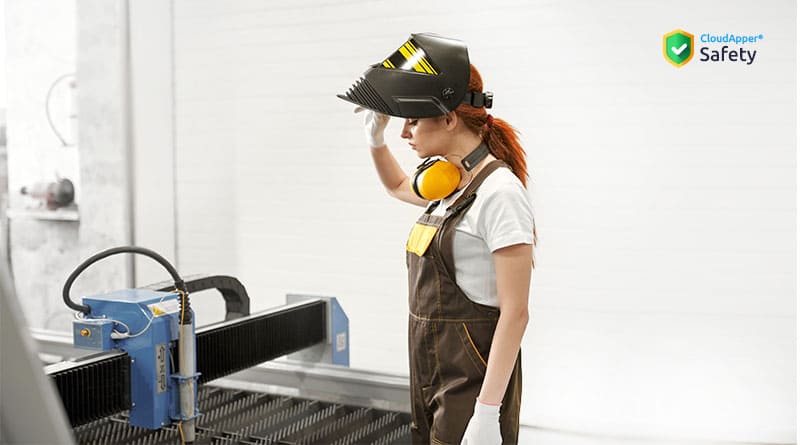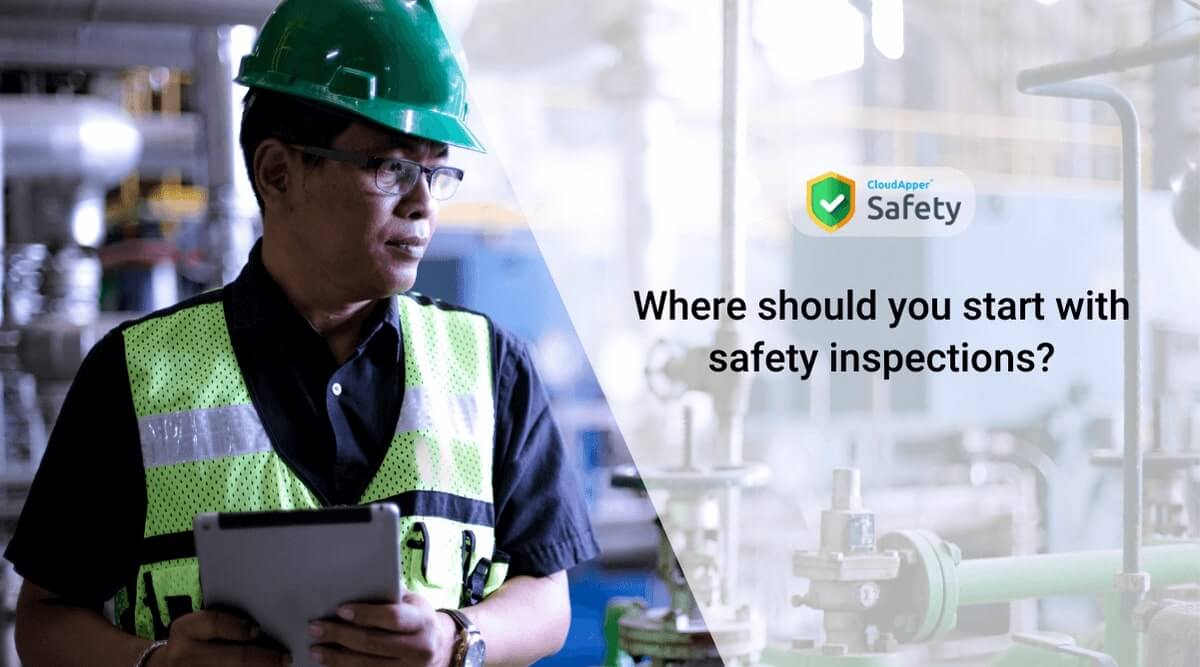Table of Contents
OSHA oversees workplace safety of virtually all the industries and organizations in the U.S., and the manufacturing industry is no exception. In fact, safety in manufacturing is crucial and far more complex compared to other industries. Firstly, manufacturing is quite a broad term, and several industries fall under it such as apparel and footwear, battery, chemical, concrete, food processing, lubricant, meat packing, semiconductor, and more. Moreover, each organization within these industries has several hazards in the workplace that may lead to accidents, incidents, and even deaths.
That being said, let’s take a look at safety in manufacturing companies, why it is crucial, and how to improve it with 4 strategies.
Safety in manufacturing facilities in a nutshell
Safety in manufacturing sites refers to providing and maintaining a safe manufacturing site, plant, factory, or facility where workers can perform their duties safely and without having to worry about potential hazards. It encompasses everything from workplace safety policies, safety training, machine guarding, to providing ample PPE for workers as applicable. As previously mentioned, OSHA establishes workplace safety laws and also penalizes companies that aren’t complying with them.
With that out of the way, let’s see why safety within manufacturing companies is so crucial.
Why safety is crucial for the manufacturing industry
Ensuring safety in manufacturing facilities is important for the following reasons:
- Reduces industrial incidents, accidents, and deaths.
- Results in fewer OSHA and other workplace safety violations and penalties.
- Boosts productivity and the bottom line.
- Increases employee morale.
- Enhances organization’s goodwill.
- Relieves the administrative burden.
Manufacturing companies are notorious for workplace incidents since many of them deal with significant hazards (chemical plants come to mind), complex processes, as well as heavy machinery. As a result, machine-related injuries, trips, falls, and exposure to harmful chemicals are quite common. These have consequences such as property or asset damage, OSHA violations, OSHA fines, hefty recovery costs down the line, and loss of goodwill.
Some stats to confirm manufacturing safety issues
To back up all of the aforementioned factors, here are some stats about how many injuries and accidents occur in manufacturing facilities. Manufacturing injuries come in at third place after healthcare and retail trade injuries – over 395,000 workplace injuries and around 35,000 illnesses occurred in 2019, and that’s excluding workplace deaths.
However, all of these issues can be drastically reduced, and some can even be eliminated if the employer is serious about safety in their manufacturing facilities. That being said, let’s see how industrial accidents can be reduced.
 CloudApper Safety helps you comply with OSHA standards for manufacturing facilities.
CloudApper Safety helps you comply with OSHA standards for manufacturing facilities.
Improving safety in manufacturing facilities with 4 strategies
Provide safety training via competent individuals
To ensure that there are no safety incidents in a manufacturing facility, the employer must educate both existing and new workers regarding the practices it wants them to follow and providing safety training is the best way to do that.
Organizations must ensure that they are providing safety training regularly, holding safety meetings, and creating two-way communication so that workers can share their experiences, safety tips & tricks they follow, as well as their concerns.
However, the most important thing is that there must be a competent and qualified individual in charge of the training sessions per OSHA’s requirements. Moreover, a crucial aspect of safety is reminding employees that they are responsible for their own safety as well as the safety of their coworkers.
Another common issue is that once training is provided to a set of employees, employers assume that they don’t require retraining – it’s a costly mistake! Manufacturing sites are full of complex processes, materials, and machinery, and not everyone will retain all the information after one session. Moreover, a worker might receive training on a piece of machinery and might not need to use it for a number of months – it’s unrealistic to expect that they’ll remember the ins and outs of it.
Always provide the option of getting retrained regarding these cases and offer quizzes to assess whether additional sessions are needed.
Implement robust hazard identification processes
One of the reasons why workplace accidents and incidents occur is because of hazards present in manufacturing site(s). As a result, identifying and addressing them proactively becomes a priority. Using workers to help identify such hazards is a great practice, and many employers have even reduced potential workplace accidents by doing so.
While training employees, they must be taught how to detect and respond to unforeseen workplace hazards. For instance, if a spill is identified by a worker, ensure that they know where and how to report it so that it can be addressed quickly. One of the most effective ways to do so is by using CloudApper Safety, an OSHA recordkeeping software. It has an incident and hazard reporting module that workers can use to report such scenarios right from their smartphones, making it more convenient than ever.
While this is just one example, employers must also ensure that inspections are being conducted in their manufacturing facilities to detect hazards and address them appropriately and in due time so that they don’t hamper processes and operations. Our next topic is how to determine who is best to oversee these inspections.
Hire a qualified and experienced safety professional
Safety professionals are becoming increasingly popular and important in improving workplace safety and they are essential especially for manufacturing companies. Safety professionals can transform workplace safety within your facilities as they are specialized to do just that. They identify and monitor workplace hazards, revise workplace safety policies and practices, plan training sessions, and ensure that the organization is adhering to updated OSHA standards – all of these tasks and more are part of their job. Thus, hiring a safety professional is an effective way to reduce incidents and accidents, as well as ensure compliance with OSHA.
Effectively safeguard workers exposed to potential hazards
While all workers face some sort of workplace hazard, workers who operate heavy machinery, use specialized tools, or work in dynamic environments are at highest risk. Incidents and accidents are far more common in manufacturing plants and are reduced by using various strategies.
One of the most common practices to protect workers in these scenarios is by providing them appropriate PPE for the job at hand. Not only should the PPE be appropriate, but it must also properly fit the employee to prevent accidents. Moreover, these should be monitored regularly to detect safety issues.
In case of heavy machinery or special equipment, other than providing training, employers need to ensure machine guards are in place on the machinery to cover the parts that might cause illnesses or injuries in the workplace.
Use a workplace safety compliance management app
OSHA compliance can be overwhelming for many, especially for those who are not familiar with effective workplace safety practices. However, a workplace safety compliance management app such as CloudApper Safety can help comply with OSHA standards for manufacturing facilities.
CloudApper Safety reduces the administrative burden, digitizes OSHA recordkeeping, ensures incident management, keeps everything in a centralized location, and reduces workplace incidents – enhancing workplace safety in the process.
CloudApper Safety is built to streamline OSHA compliance of your site(s) – contact us now to see how it’s different and intuitive.
What is CloudApper AI Platform?
CloudApper AI is an advanced platform that enables organizations to integrate AI into their existing enterprise systems effortlessly, without the need for technical expertise, costly development, or upgrading the underlying infrastructure. By transforming legacy systems into AI-capable solutions, CloudApper allows companies to harness the power of Generative AI quickly and efficiently. This approach has been successfully implemented with leading systems like UKG, Workday, Oracle, Paradox, Amazon AWS Bedrock and can be applied across various industries, helping businesses enhance productivity, automate processes, and gain deeper insights without the usual complexities. With CloudApper AI, you can start experiencing the transformative benefits of AI today. Learn More


















